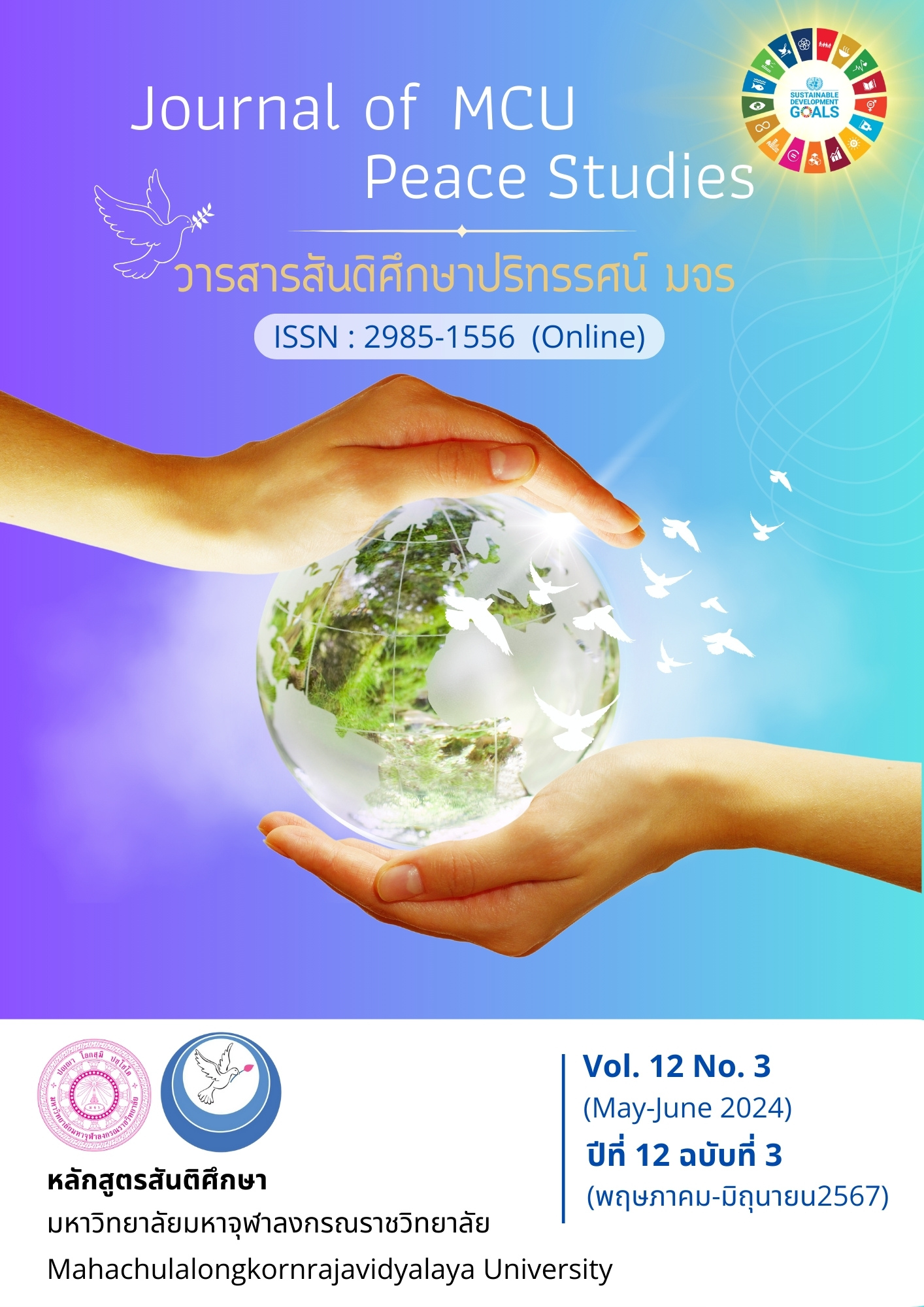The Classification and Design of New Tensegrity Structure Based on the Area Coverage Concept
Main Article Content
บทคัดย่อ
This research was conducted to explore, classify and propose design principles for new types of tensegrity structures for area cover applications. Tensegrity structures are widely used in the fields of engineering and architecture to create bridges, domes, and buildings because the structures are flexible, lightweight and can be expanded into a variety of forms. Moreover, the tensegrity structure had a series of continuous cables in tension and another set of discontinuous struts in compression. It was usually flexible, lightweight, and capable of spanning wide ranges but considered complex and challenging to assemble. This practical research involves the classification, development of models, and their application to specific types of work. The research process is divided into six main steps: Classification, Summary, Hypotheses, Experiments, Results, and Deliveries. Experiments with physical models are also conducted to explore potential variations in tensegrity structures. This method helps verify forces, identify form-finding factors, and create efficient designs.
The results of this research can be used to guide the development of architecture, product design, and other designs by leveraging the classifications, principles, and methods established in this study. In addition, the research and experimentation process involve an in-depth exploration of the structural forms and properties of each type, leading to the creation of new designs and the ability to apply each structure according to its intended use. The development of such structures introduces numerous possibilities for comprehending Tensegrity structures and acts as a catalyst for advancements across various applications. The primary focus is on investigating the origins and historical evolution of Tensegrity structures, highlighting their advantages and disadvantages. Additionally, the research aims to classify existing types and propose a new Tensegrity structure with controllable width and length expansion. The overarching goal is to provide a comprehensive understanding, facilitate practical applications, and extend the design capabilities of Tensegrity structures.
Article Details

อนุญาตภายใต้เงื่อนไข Creative Commons Attribution-NonCommercial-NoDerivatives 4.0 International License.
ทัศนะและความคิดเห็นที่ปรากฏในบทความในวารสาร ถือเป็นความรับผิดชอบของผู้เขียนบทความนั้น และไม่ถือเป็นทัศนะและความรับผิดชอบของกองบรรณาธิการ ยินยอมว่าบทความเป็นลิขสิทธิ์ของวารสาร
เอกสารอ้างอิง
Fraddosio, A., Pavone, G., & Piccioni, M. D. (2019). Minimal Mass and Self-stress Analysis for Innovative V-Expander Tensegrity Cells. Composite Structures, 209, 754-774.
Fuller, R. B. (1982). Synergetics: Explorations in the Geometry of Thinking. New York: Macmillan Publishing Co., Inc.
Gomez-Jauregui, V., Carrillo-Rodriguez, A., Manchado, C., & Lastra-Gonzalez, P. (2023). Tensegrity Applications to Architecture, Engineering, and Robotics: A Review. Applied Sciences, 13(15), 1-37.
Jáuregui, V. G. (2020). Tensegrity Structures and their Application to Architecture (Vol. 2). Spain: Ed. Universidad de Cantabria.
Koohestani, K. (2012). Form-finding of Tensegrity Structures Via Genetic Algorithm. International Journal of Solids and Structures, 49(5), 739-747.
Liu, Y. et al. (2022). A Review on Tensegrity Structures-based Robots. Mechanism and Machine Theory, 168, 104571.
Ma, S., Chen, M., & Skelton, R. E. (2020). Design of a New Tensegrity Cantilever Structure. Composite Structures, 243, 112188.
______. (2022). Tensegrity System Dynamics Based on Finite Element Method. Composite Structures, 280, 114838.
Motro, R. (2003). Tensegrity: Structural Systems for the Future. London; Sterling, VA: Kogan Page Science.
Motro, R. (2012). Tensegrity: From Art to Structural Engineering. In 2012 IASS-APCS Symposium (pp. 14-p).
Pugh, A. (1976). An Introduction to Tensegrity. California: Univ of California Press.
Skelton, R. E., et al. (2001). An Introduction to the Mechanics of Tensegrity Structures. In Proceedings of the 40th IEEE Conference on Decision and Control (Cat. No. 01CH37228) (Vol. 5, pp. 4254-4259). Orlando, Florida, USA: IEEE.
Snelson, K. D. (1965). U.S. Patent No. 3,169,611. Washington, DC: U.S. Patent and Trademark Office.
Xu, X., & Luo, Y. (2010). Form-finding of Nonregular Tensegrities Using a Genetic Algorithm. Mechanics Research Communications, 37(1), 85-91.


